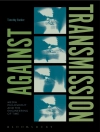This book argues that over the twentieth and twenty-first centuries, the cinema in Britain became the site on which childhood was projected, examined, and understood. Through an analysis of these projections; via case studies that encompass early cinema, pre and post-war film, and contemporary cinema; this book interprets the child in British cinema as a device through which to reflect upon issues of national culture, race, empire, class, and gender. Beginning with a discussion of early cinematic depictions of the child in Britain, this book examines cultural expressions of nationhood produced via non-commercial cinemas for children. It considers the way cinema encroaches on the moral edification of the child and the ostensible vibrancy and vitality of the British boy in post-war cinema. The author explores the representational and instrumental differences between depictions of boys and girls before extending this discussion to investigate the treatment of migrant, refugee, and immigrant children in British cinema. It ends by recapitulating these arguments through a discussion of internationally successful British blockbuster cinema. The child in this study is a mobile figure, deployed across generic boundaries, throughout the history of British cinema and embodying a range of discourses regarding the health and wellbeing of the nation.
Jadual kandungan
Chapter 1: Writing the Child.- Chapter 2: Watching the Child.- Chapter 3: The Child and the City: The Urban Adventurer in Post-War Britain.- Chapter 4: Girlhood: Mobility, Stasis, and Change.- Chapter 5: Other Children: Migrant, Refugee, Other.- Chapter 6: Harry Potter: The British.
Mengenai Pengarang
Matthew Smith is a Film Studies scholar based in North West England. He has previously worked at the University of Liverpool, UK, and the University of Lancaster, UK, from which he received his Ph D.












